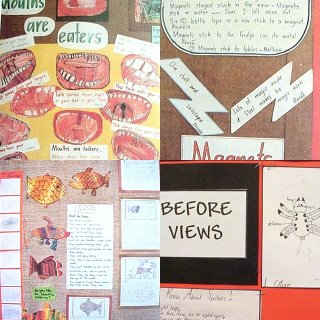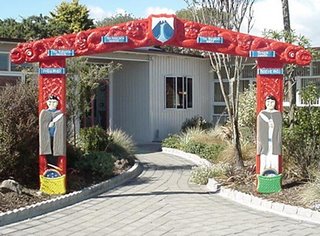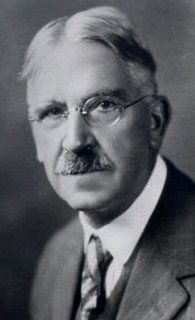 L.I.S.P. The Learning in Science Project.
L.I.S.P. The Learning in Science Project. 
In the early 80s a major New Zealand project was developed at the University Waikato called the
Learning In Science Project known as 'LISP'.
With the introduction of a range of new curriculums (based on learning areas, strands, levels and learning objectives) the LISP project was sidelined. Ironically, today, as the ‘new’ curriculums have been found less than wonderful the ideas behind the LISP programme are again relevant and implicit in the pedagogy of the ‘new’ draft curriculum. The ideas behind LISP are probably better known to many as ‘
constructivist teaching’.
The key to constructivism is that meaning is an active meaning making process of creating rather than acquiring knowledge. Dr Roger Osborne, of the Physics Department at Waikato University, became involved because he was concerned about his students who were not able to apply physics ideas in his lab. He presumed that they had not been 'taught' at secondary school but he found that they had, but not in a way that the 'learning' was retained as part of the students’ real knowledge base. This paradox led to his leadership of the Learning in Science Project.
Research showed that the ‘
prior ideas’ a student brings to any learning situation , if not aligned with the teachers concepts, remains the view the learner holds, even if they know the ‘right answer’ to give back in a test.
This has dramatic implications for teachers and teaching and explains why so mush of what is taught is soon forgotten or fragile at best. As David Ausabel (68) the educational psychologist wisely wrote,
‘The most important single factor influencing learning is what the learner already knows; ascertain this and teach accordingly’. Teachers of early literacy and numeracy will be well aware of this approach.
A constructivist approach mirrors the idiosyncratic personalized way humans learn best. Constructivist approaches value both the process and the product. It requires the support of a sensitive teacher to ensure their students' views are acknowledged and challenged while, at the same time, they must accept that what the students finally believe must make sense to learner. This is the process we use to all expand our knowledge – a life long process of ‘changing our minds’. What we know can only be assessed by what we can apply not by what we can simply remember.
Possibly the approach is better called ‘
co-constructivist’ as meaning is negotiated through both experience and dialogue with others. The Russian
Vygotsky believes that learning is first learnt socially then individually and his saying is pertinent to teachers,
‘What a child can do with help today she can do by herself tomorrow.’ Primary teachers, who are aware of Marie Clay's work in reading, will see connections, as will those who make use of explicit ‘feedback’ and ‘feed-forward’. Creative teachers, who have always believed in valuing students’ questions and ‘voice’, will be reassured.
Those who still believe in a transmission model of teaching will have to change their minds if they want to connect with their students. Students can find their teachers own language and knowledge a barrier. It is as difficult for teachers to change (reconstruct) their model of teaching as it is for students to change ideas that seem to work well!
A simple format for a constructive approach would be as follows. In reality it is just
another version of inquiry teaching – but one that places more emphasis on the prior ideas students bring with them to any learning situation.
Present a challenge to the students (or build on student questions or areas of interest).
Discover the range of students’ ‘prior’ ideas (preliminary understandings) about the question(s) through dialogue, writing or drawing. These can be recorded or displayed so students can assess their growth of understanding at end of study.
Where there are apposing views
plan with students way to research to clarify ideas. Student may need to be grouped into teams to research and present their findings. Teachers will need to assist student gather appropriate resources and to interact, as required, to keep individuals or groups focused. Students challenging each others ideas are an important part of such an approach.
Idea are presented to the class or displayed and discussions entered into to
discuss changed in views that have occurred. Teachers will have to appreciate that student prior views may be hard to change but at least such students will be aware that alternatives exist. Student only retain what makes sense to them!
New questions, or queries, may well ‘emerge’, leading into further inquiries.
Research has shown that students (and many adults) hold views that have long been rejected by the scientific world but as they seem to make sense they are retained.
An advantage of this approach is that teachers can learn alongside the students as co- researchers illustrating that ‘ignorance’ and curiosity are the beginnings of all learning. A constructivist approach is the basis of learning for the very young child and the scientist – both are working at the edge of their competence challenged by not knowing. We are all scientists of a sorts all our lives.
Teachers, if they want to engage students in their learning, need to ensure students see purpose in what they are asked to do; have access to ways to research possible answers; be helped to draw sensible conclusions from their learning; and link their understanding, as best they can, to acceptable scientific viewpoints
Learners must actively construct, or generate, meaning for themselves from their own experiences. No one can do it for them. Knowledge is constructed from within. Learners must take a major responsibility for his/her own learning behaviour. Without some appreciation of the learners existing framework of ideas successful teaching becomes difficult.
If we insist that students learn what we believe they need, or 'just in case they will need it in the future', it may be at the expense of their own enthusiasm, self confidence and learning identity.
Without a constructivist 'mindset' students will continue to be excluded from valuing their own ‘learning power’.
A link to an excellent resource on constructivist teaching
 I haven't had the opportunity to post a blog since before Christmas.
I haven't had the opportunity to post a blog since before Christmas.

















